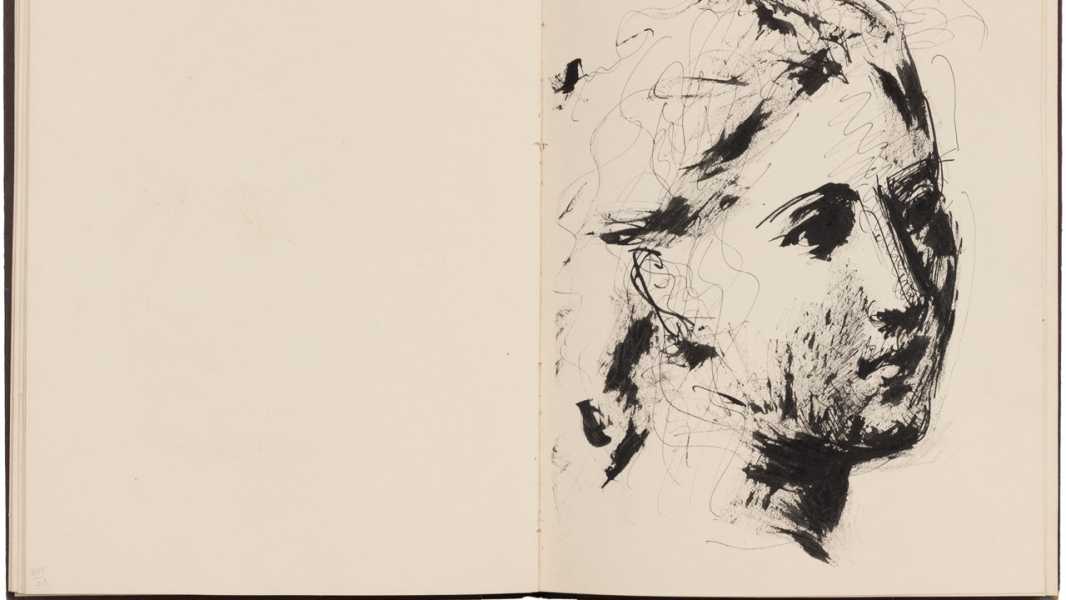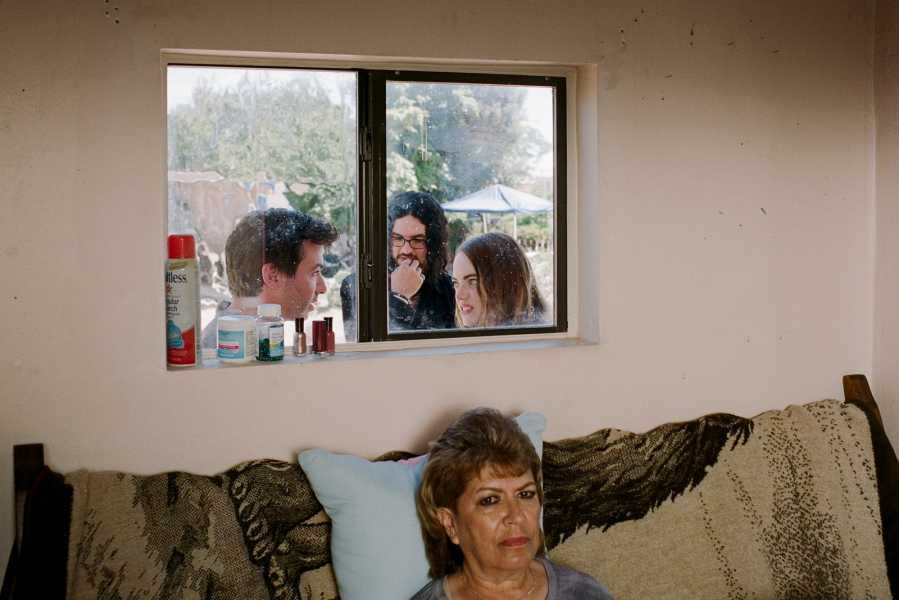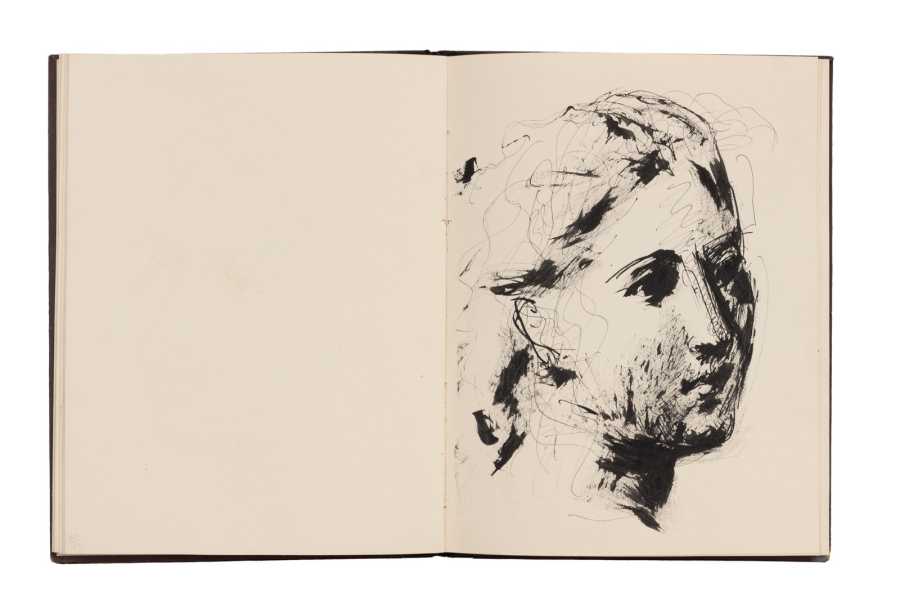
Save this storySave this storySave this storySave this story
Alex Barasch
Culture editor
You’re reading the Goings On newsletter, a guide to what we’re watching, listening to, and doing this week. Sign up to receive it in your in-box.
Last year, Nathan Fielder sparked fierce debates over ethics and authenticity with “The Rehearsal”—an HBO “docu-comedy” that I found both riveting and alarming—so it feels right that his first foray into scripted television is preoccupied by the same themes. “The Curse,” which premières tonight on Showtime, chronicles the filming of a “philanthropic” house-flipping show whose married co-hosts, Asher (Fielder) and Whitney Siegel (Emma Stone), replace distressed properties in Española, New Mexico, with eco-friendly—and markedly more expensive—homes. Inevitably, tensions arise in the marriage, the shoot, and the community. The show is part satire, part psychological horror, exposing the queasy artifice of reality TV and the limits of white-liberal largesse. Though the Siegels insist that their project will only benefit residents, their stated values are swiftly eclipsed by an apolitical network, an amoral producer, and their own anxieties about how they’re perceived. Minutes into the pilot, someone is blowing menthol into the eyes of a cancer patient to simulate tears of gratitude.

“The Curse.”
Photograph by John Paul Lopez / Courtesy A24 / Paramount+ with Showtime
A troubled romance—and production process—is also at the heart of David Adjmi’s remarkable new play “Stereophonic,” at Playwrights Horizons. Set in nineteen-seventies California, the story charts the collapse of a band amid the creation of an album. Diana (Sarah Pidgeon) is a stealthily ambitious singer on the cusp of a solo career; her long-term boyfriend and the lead guitarist, Peter (Tom Pecinka), has incessant, often brutal notes for her and just about everyone else. “Stereophonic,” like “The Curse,” hinges on self-serving, mercurial characters. But where the Siegels’ work is objectionable from the outset, Adjmi believes in the art that results from all this pain. The music, he suggests, is worth the late nights, the obsessive retakes, the relationships foundering along the way. After the cynicism of “The Curse,” whose protagonists are bent on obscuring their true natures, it was moving to watch the bandmates strive for something real.
Spotlight

Art work courtesy Fundación Almine y Bernard Ruiz-Picasso; Photograph by Hugard & VanoverscheldeArt
The fiftieth anniversary of Pablo Picasso’s death has inspired plenty of exhibitions that go big or go deep. The Pace gallery’s splendid contribution to the festivities, “Picasso: 14 Sketchbooks,” goes long, studying the evolution of the Master’s hand between 1900 and 1959. It’s a one-stop shop for motifs that even non-aficionados can rattle off (musical instruments, mistresses, jagged nudes, evil-eyed bulls) and, of course, for some of the best drawing of the last century. In the magnificent “Head of a Woman” (pictured), completed in 1924, wiggly, wayward India-ink lines coalesce into something hard and inevitable—if the rival cults of Picasso worship and Picasso hatred bore you, seek out images like this one and bask.—Jackson Arn (Pace; through Dec. 22.)

About Town
Opera
Daniel Catán’s “Florencia en el Amazonas,” an opera of surpassing loveliness, unblushingly embraces a post-Romantic musical language of atmospheric woodwinds, throbbing strings, and shimmery high notes. Some might call it retrograde for a work from 1996, but its indebtedness to Puccini suits a story about a wistful prima donna in the early nineteen-hundreds. As the characters make their way to an opera house in Brazil on a riverboat traversing the Amazon, a heady mix of instrumental timbres articulates their desires. For the Met première, Ailyn Pérez, a soprano with an especially warm voice, stars as the titular diva, in a production directed by Mary Zimmerman and conducted by Yannick Nézet-Séguin.—Oussama Zahr (Metropolitan Opera House; select dates Nov. 16-Dec. 14.)
Folk
When Bob Dylan gave his Nobel lecture, after being awarded the 2016 prize for literature, he implored people to take in his lyrics as they were intended: by listening, on record or in concert, not by reading. He quoted Homer, and he pointed to his songs as vehicles for storytelling. “I’ve searched the world over for the Holy Grail / I sing songs of love—I sing songs of betrayal,” he croaks on “False Prophet,” a single he performs on his “Rough and Rowdy Ways” tour, which comes to New York City this month. His album of the same name, from 2020, is full of glorious Americana, with scenes—from Key West to the Rubicon, the grassy knoll to the city of God—etched by his seasoned delivery. As he puts it, he sings songs of experience, which bear in them not only stories from his travels but the hallowed history of every time he’s performed.—Sheldon Pearce (Kings Theatre, Nov. 14-15; Beacon Theatre, Nov. 16.)
Dance

Photograph by Camila Greenwell
In Rudyard Kipling’s “The Jungle Book,” a young boy raised by a family of wolves must choose between life in the animal kingdom and a return to the human world. The British dancer-choreographer Akram Khan posits a different question in his “Jungle Book reimagined”: Is there even a place for humans on a planet they have damaged to the point of near-collapse? Through a mix of audio, animation, and dance, Khan has created a fable about the moral and physical costs of environmental destruction. The protagonist, Mowgli, a girl who has lost her parents to rising seas, is both protected and challenged by the animals who save her, whose thoughts are heard in voice-over.—Marina Harss (Rose Theatre; Nov. 16-18.)
Art
In recent years, the Brooklyn Museum has organized shows around non-fine-artist superstars of varying quality and relevance. “Spike Lee: Creative Sources” comprises some four hundred and fifty objects from the director’s collection, including the original draft of the screenplay for his first masterpiece, “Do the Right Thing”; a Richard Avedon photograph of Malcolm X; a letter from Barack Obama; and one of Prince’s guitars. Indulgent? Sure, but a messy, risky too-muchness has always been one of Lee’s strengths, and it seems appropriate here—you come away overloaded but still eager to rewatch the films. As long as the museum is in the habit of giving the reins to celebrities, it might as well give them to Brooklyn’s best.—Jackson Arn (Brooklyn Museum; through Feb. 4.)
Movies

Photograph by François Duhamel / Courtesy Netflix
In “May December,” Todd Haynes dramatizes the complex connection between an actress, Elizabeth (Natalie Portman), and a woman, Gracie (Julianne Moore), whom she’s planning to portray in a movie. Gracie and her husband, Joe (Charles Melton), are pariahs in their home town of Savannah. Their relationship began when he was just out of seventh grade and she was in her thirties; she was imprisoned, and after her release they married. Now, twenty years later, they have three nearly grown children, and they’re desperate for empathetic understanding. Enter Elizabeth, who insinuates herself into the family, gains information—and possibly disinformation—about the couple’s troubled life, and exhibits artistic intentions as dubious as her ethical judgment. Haynes deftly sketches a tangle of manipulations and power plays and, along the way, offers a useful reminder: when Hollywood comes for your life story, run.—Richard Brody (Opening Nov. 17 in theatres and streaming on Netflix starting Dec. 1.)
Off Broadway
Jerome Weidman and the composer Harold Rome’s garment-district musical, from 1962—thoughtfully reshaped by Weidman’s librettist son, John, and directed by Trip Cullman—feels like being walloped by a roll of velvet. I mean that admiringly: when slippery Harry Bogen (Santino Fontana) takes advantage of his doting mama (Judy Kuhn), his adoring sweetheart (Rebecca Naomi Jones), and his trusting business partner (Adam Chanler-Berat) to get ahead, it should feel like a slug in the gut. “I Can Get It For You Wholesale” is not just a rogue’s tale; it’s also a labor-movement cri de coeur. Julia Lester, playing Harry’s secretary, belts “Miss Marmelstein,” the song that first made Barbra Streisand famous, but it’s Lester’s glass-shattering “What Are They Doing to Us Now?” that will stamp the price of unregulated, unrepentant capitalism right onto your quaking spirit.—Helen Shaw (Classic Stage Company; through Dec. 17.)

Pick Three
The staff writer Vinson Cunningham shares current obsessions.
1. Best cinematic interior design: The more I think about Sofia Coppola’s new film, “Priscilla,” about the gilded cage inhabited by Priscilla Presley in her world-famous marriage to Elvis, the more I am enthralled and—reluctantly—seduced by its attention to sumptuous surfaces. Elvis’s heavily brocaded bedroom, and the over-the-top beauty of the Presley home in Memphis, Tennessee, is a harrowing metaphor for the claustrophobic effects of patriarchy and the subtle encroachments of abuse.
2. Best world-spanning exhibition: The MacArthur “genius”-grant recipient An-My Lê is one of my favorite artists in any medium. (She is also, I should admit, a friend.) Her photographs inspire deep contemplation at the crossroads of fiction and reënactment, politics and fantasy, the displacements of war and the feelings of home. Her truly epic career retrospective at MOMA—curated by Roxana Marcoci and Caitlin Ryan—spans, with rare rigor and rarer beauty, post-Trump America, postwar Vietnam, the Civil War, and the civic disruptions that follow the making of a nation.

Illustration by Liam Hopkins
3. Best album bridging today’s music to nineties R. & B.: I have been hopelessly obsessed with “The Love Album: Off the Grid,” the new record by the mega-producer Diddy (formerly known as Puff Daddy), since its September release. The East Coast R. & B. that I grew up with—by such artists as Carl Thomas, Faith Evans, and Mary J. Blige—was shepherded into being, in large part, by Diddy. Now he’s made a swoon-inducing, lovesick album that looks back at those sources, infusing them with new voices and fresh sounds.
P.S. Good stuff on the Internet:
- Angel Reese meets Law Roach
- The New York Transit Museum’s digital exhibits
- The “Ghost Story” podcast
Sourse: newyorker.com